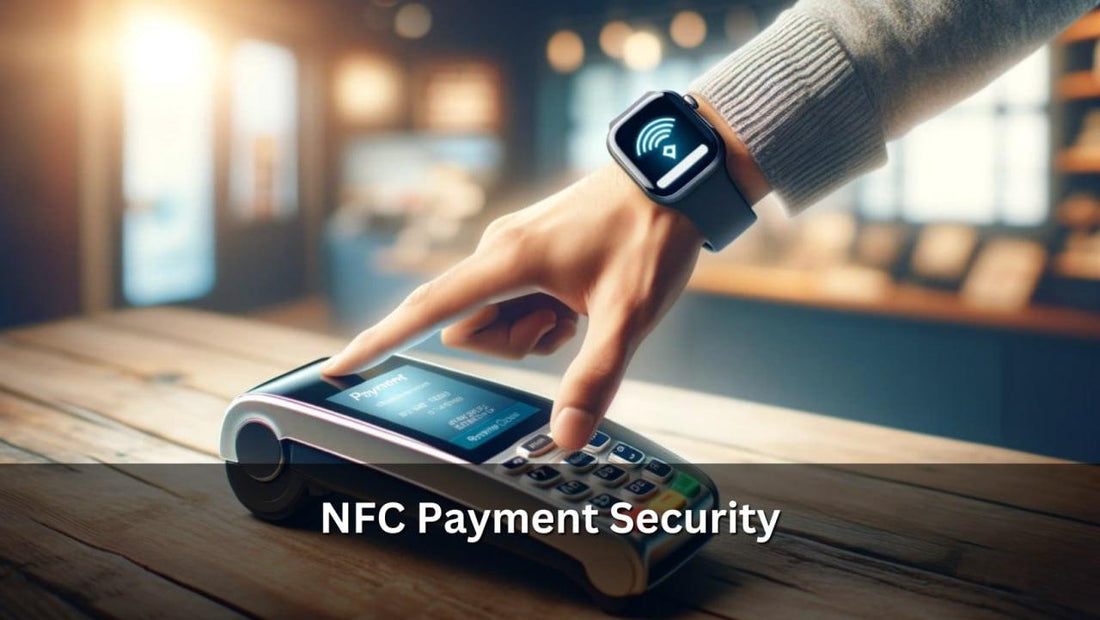NFC Payment Security

Contents
Key Features of NFC Payments
Near Field Communication (NFC) is a wireless technology that enables the exchange of data between devices over a short range, typically requiring a distance of 4 cm or less to initiate a connection. This technology is widely used in various applications, most notably in mobile payments and digital wallets. The key features of NFC payments include:
-
Convenience: NFC enables users to make payments quickly and effortlessly by simply tapping their device near a point-of-sale terminal.
-
Speed: Transactions via NFC are completed within seconds, significantly faster than traditional payment methods.
-
Security: NFC payments are secured with advanced encryption standards and dynamic data technologies, making each transaction unique and difficult to intercept.
-
Versatility: Beyond payments, NFC can be used for electronic ticketing, access control, and data sharing between devices.
-
Integration: Many smartphones and devices come with built-in NFC capabilities, supporting a wide range of uses beyond financial transactions, like pairing with Bluetooth devices or reading information tags in smart posters.
These features make NFC a preferred choice for businesses and consumers looking for a fast, secure, and convenient payment method.

How Do NFC Payments Work?
NFC payments function through a technology that allows two devices to communicate when they are placed within a few centimeters of each other. Here's how a typical NFC payment process unfolds:
-
Activation: When an NFC-enabled device, such as a smartphone or payment card, is brought near an NFC reader, typically at a point-of-sale terminal, the proximity triggers the devices to activate.
-
Communication: The devices use electromagnetic fields to establish a connection, enabling the exchange of data. The payment terminal sends a signal requesting payment details, which the smartphone securely transmits.
-
Authentication: The transaction data, encrypted for security, is sent to the payment processor for authentication. This step often involves a verification process, such as entering a PIN or using a biometric.
-
Completion: Once verified and processed, the payment is either approved or denied. Confirmation is sent back to both the user's device and the merchant's terminal.
-
Security: Throughout this process, security measures such as tokenization—where actual account details are replaced with unique identifiers—are employed to protect sensitive information.
For additional insights into NFC security and its application in mobile payments, visit BSI NFC Security Guidelines. This resource provides valuable information on the security aspects of contactless payments.
What Security Measures Do NFC Payments Have?
NFC payments are designed with robust security measures to ensure the safety of financial transactions and protect against unauthorized access. The integration of advanced encryption standards, such as AES (Advanced Encryption Standard), plays a crucial role in securing data transmitted during transactions. This encryption safeguards sensitive information, like credit card numbers, making it extremely challenging for hackers to intercept and decode.
Another key component is the Secure Element (SE), a specialized chip within the device that securely stores payment information and performs cryptographic operations. Isolated from the device’s main operating system, the SE provides a fortified barrier against malware attacks.
Additionally, NFC payments utilize tokenization to enhance security further. This process replaces actual payment card details with a unique, randomly generated number known as a token. This token represents the user’s account information but is useless without the corresponding decryption key, ensuring that intercepted transaction data remains secure.
Two-factor authentication adds an extra layer of security, requiring users to verify their identity through a PIN, fingerprint, or facial recognition before completing a transaction. This method significantly reduces the risk of fraudulent activities.
NFC systems also employ timed session limits, where transactions must be completed within a specified timeframe after device authentication. This feature prevents unauthorized use by automatically terminating the session if the transaction does not conclude within the designated window.
Threats and Risks with NFC Payments
While NFC payments offer significant convenience and security benefits, they are not immune to threats and risks. The very features that make NFC useful—its wireless nature and speed—can also make it vulnerable. One of the primary concerns is eavesdropping; hackers can potentially intercept the data transmitted during a transaction if they are equipped with the right tools and are physically close enough to the communication channel.
Another risk involves data manipulation and relay attacks, where unauthorized users manipulate or delay the transmission of data as it travels from the NFC device to the terminal. Additionally, lost or stolen devices pose a significant risk if not properly secured, as they can be used to make unauthorized transactions.
NFC Security: How to Mitigate Risks and Vulnerabilities
To counteract the inherent risks in NFC payments, adopting comprehensive security measures is essential. Firstly, ensuring devices are equipped with the latest security updates and patches can thwart many exploit attempts. Users should also be educated on safe NFC practices, like only enabling NFC functions when needed and turning them off after use to minimize unauthorized access.
Additionally, implementing strong authentication methods, such as biometric identifiers and complex PINs, adds a significant barrier against unauthorized transactions. Establishing strict controls over app permissions on devices that use NFC technology can further secure sensitive information.
For Small Businesses
Small businesses can particularly benefit from integrating NFC technology into their operations, given its cost-effectiveness and efficiency. To begin, selecting an NFC-enabled point-of-sale (POS) system that fits the business model and budget is crucial. These systems not only streamline transactions but also improve the customer experience with quick and contactless checkouts.
It's also essential for small business owners to ensure that their NFC systems are compliant with industry security standards to protect against fraud. Regular training for staff on the proper handling of NFC devices and monitoring for suspicious activities can further safeguard against potential security breaches.

What to Look for When Choosing a Card Terminal Provider
When selecting a card terminal provider for NFC payments, prioritize security features and compliance with payment industry standards. Look for providers that offer robust customer support and scalable solutions to grow with your business. Additionally, consider the overall cost and any provided analytics tools.

We at NFC Tagify provide all sort of NFC Solutions or you may contact us: Tel. 01600800080, Email: info@nfctagify.com









